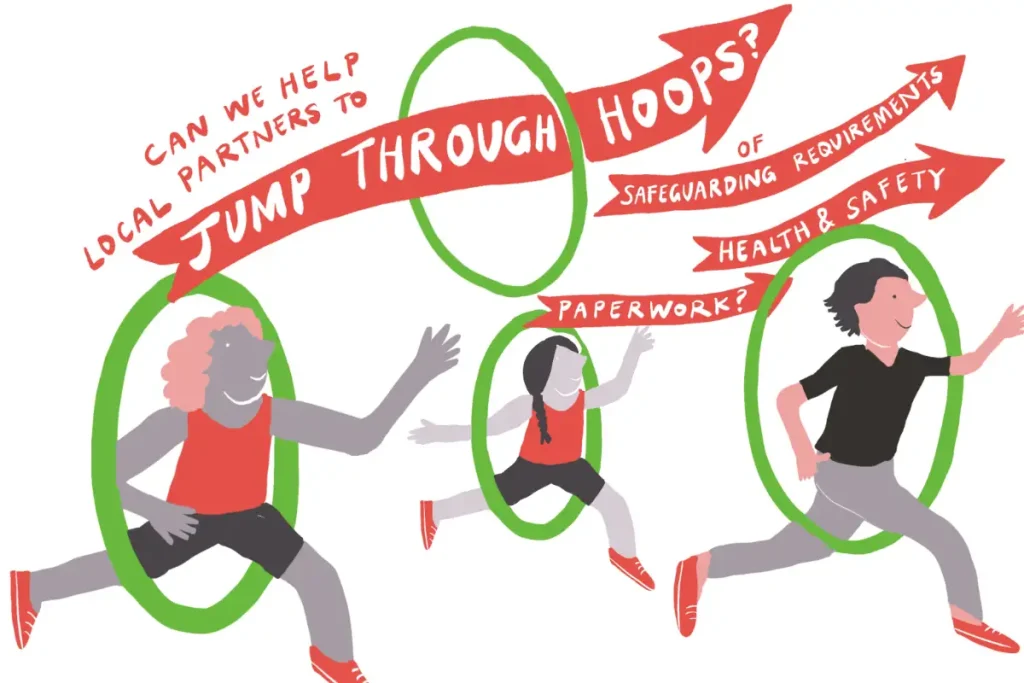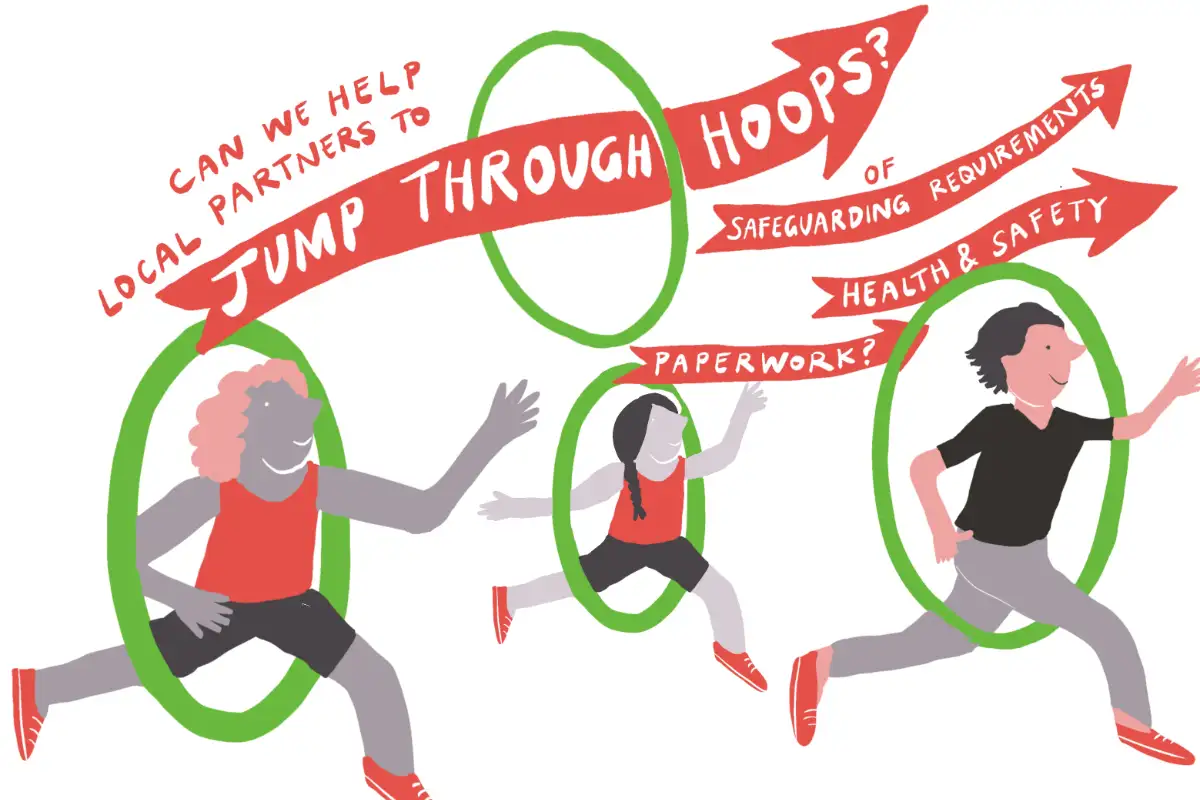Pauline Tambling reflects on the Secondary Schools provision & the arts sector over the last 40 years
We published The Arts in Schools: a new conversation on the value of the arts in and beyond schools in May 2022, reflecting on the 1982 Gulbenkian report on this topic and developments in arts education since. In June and July 2022 we convened a series of roundtables on Zoom with school leaders, teachers, arts education practitioners, academics and policy makers on eight themes in the original report.
What follows are personal reflections following what was discussed in a meeting chaired by Dame Alison Peacock on Arts provision in secondary education. A fuller response to what we’ve heard across all the roundtables and responses to our Think Piece will be published in a new report in early 2023.
In 1982 when the Gulbenkian Foundation’s report, The Arts in Schools was published, then as now, there was plenty of evidence of good arts education in schools and local authorities.
‘In some schools the arts are well-established and make a vital contribution both to individual education and to the quality of school life in general. It would be wrong to suggest otherwise. It would be equally wrong to suppose that this is the case in all schools…’ 1

What was true then, and what is true now, is that some secondary schools value the arts as an important component of a ‘broad and balanced curriculum’ and some less so. There are nuances to this statement. For some school leaders the arts are an essential part of the school curriculum, whereas for others they are important but extra-curricular and to be found only in after-school provision, voluntary activities or boxed off in an arts week or for a special occasion. Most arts teachers would say that what happens in lessons is the only a start – creating the spark. The arts need to be in the curriculum, extra-curricular and to link to community and professional practice – but negotiating such a complex landscape is challenging.
The UK Government’s June 2022 National Plan for Music Education recognises the problem. Its consultation revealed that only half of its consultees felt that music provision in schools aligned to the Government’s vision and that activity was inconsistent. The document, although sound, offers non-statutory guidance so it is difficult to see how it will impact on the fifty per cent of provision that currently falls short, nor how the forthcoming Cultural Education Plan can be more impactful.
Equally challenging, though, is the nature of arts teaching which at its best is less about the transfer of knowledge and more about the interplay between young people’s own arts practice and the wider world of the arts beyond the school. Good arts teachers are often arts practitioners themselves and are adept at nurturing creativity and making links beyond the school. How does such an approach fit into a weekly lesson, or develop beyond learning skills to putting them into action? As well as individual work there is the creating of a production, performance or exhibition, often collaboratively, that doesn’t fit well within the timetable, or the constraints of public examinations which focus on individual rather than collective achievement. Opportunities beyond the school challenge timetables, and often involve complicated administration to make them work.
Those signing up to our roundtable discussions about The Arts in Schools were educators who cared about the future of the arts in schools. We heard a lot about good practice – but often delivered against the grain. There is no doubt that arts teachers are tenacious and resilient. They believe passionately in what they do and its value to young people, but they sometimes feel it’s a struggle to get a hearing, or to be part of curriculum planning. The best arts teachers often gravitate towards schools or trusts that already value the arts because where the school leadership sees value, resources and bigger departments are likely to follow.
In 1982, the Gulbenkian report writers identified a range of challenges for secondary school arts provision: facilities, time, staff and attitudes (of the school leadership). Most pressing at the time was the need for teaching staff to access ongoing professional development, to exchange ideas and to feel valued in schools where often they were in the minority. There was concern that the arts subjects were fighting each other for curriculum share and resources which led to a strong view that the different arts subjects should band together in expressive arts faculties. We’re now seeing this development in Wales where the ‘Expressive Arts’ includes art, dance, drama, film and digital media and music, and recognises the discrete body of knowledge and skills of each ‘subject’ while seeing their value as a group of subjects nurturing the creative process.
Those of us in the arts have spent many years making the case for why the arts are an important aspect of schooling. The Arts in Schools points to a wider purpose for education than academic achievement:
‘We are not arguing against the pursuit of academic excellence. We are arguing that the level of concern with this in schools is misguided., wasteful and unjustified – socially, educationally and economically. What children and young people urgently need is a varied general education which sees the acquisition of knowledge and practical skills as integral parts of personal development.’[4]
What we heard from teachers, school leaders, academics and arts practitioners is that the problems young people are facing today are urgent. Schools are dealing with mental health issues as never before – and teachers are under enormous pressures too. Following the Covid-19 pandemic and lockdowns, a whole generation of young people have missed out on education and the current cost-of-living crisis will make matters worse. Academic catch-up programmes will not, on their own, address the problem.
The Gulbenkian writers felt that,
‘The uniqueness of human existence consists, above all, in our capacity to appraise and communicate with each other about our various experiences of the world. We do this in many different ways, through many different modes of understanding and communication – not just one.’5
Finding time in our secondary schools for different approaches to teaching and learning, addressing issues that are beyond the academic such as attendance, motivation, enjoyment, exploration, mental well-being, feel like crucial elements to offering young people an education for the here and now, as well as the future. If all schooling focuses on the next test, getting into the next educational institution or the ultimate job opportunity what happens to those that fail to reach that goal? And those who do but see themselves as more than their careers? And, most of all, what value does that put on young people’s own voices and their own contributions to their schools, communities and society?
Pauline Tambling,
Co-Director, Arts in Schools project
1 The Arts in Schools, p.61
5 The Arts in Schools, p.10
We will be sharing a new The arts in schools: foundations for the future report in the new year. Subscribe to our newsletter to stay up to date, and get involved in the conversation on social media using the #ArtsInSchools hashtag.




